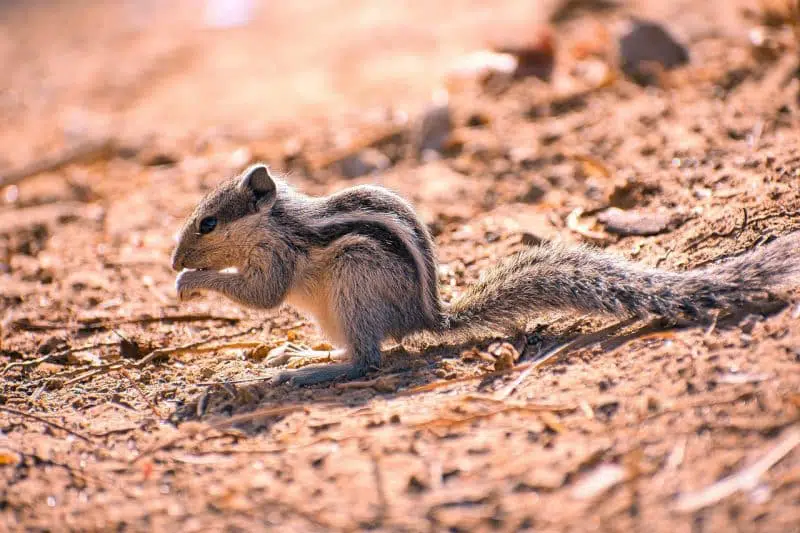Welcome to the world of animals that start with I! From the extraordinary to the endangered, this list unveils unique, vulnerable, and even sacred animals. Get ready to expand your wildlife knowledge and discover the incredible stories behind each magnificent animal that starts with I.
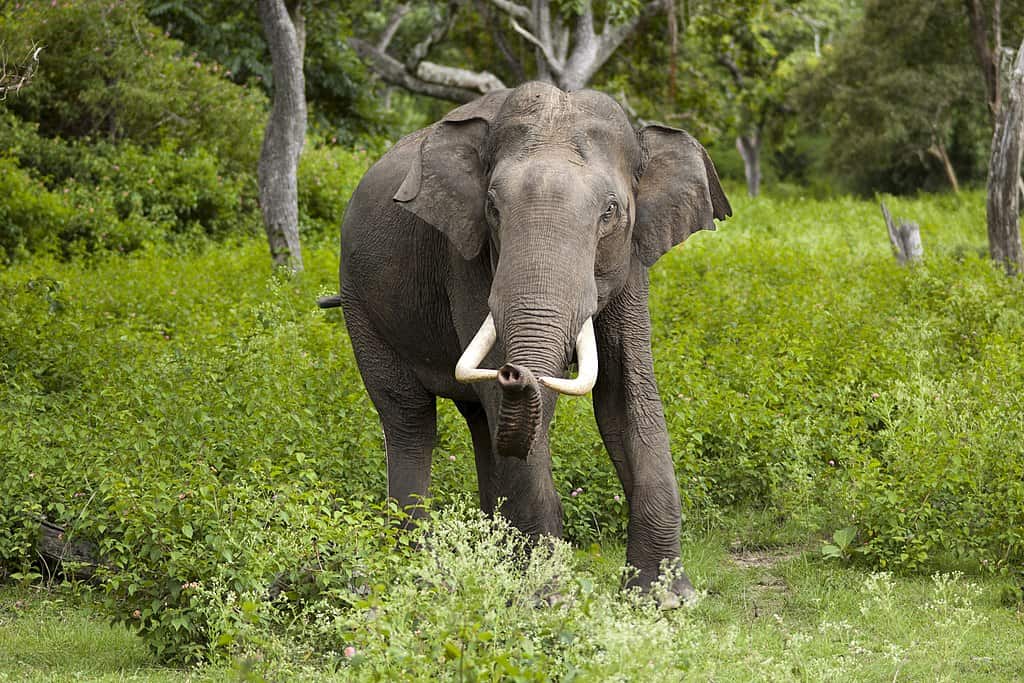
Enjoy the list and learn more about exciting animals. Let’s get into it.
You can read the entire article or jump to any section you like.
Overview of Animals That Start with I
1. Ibex
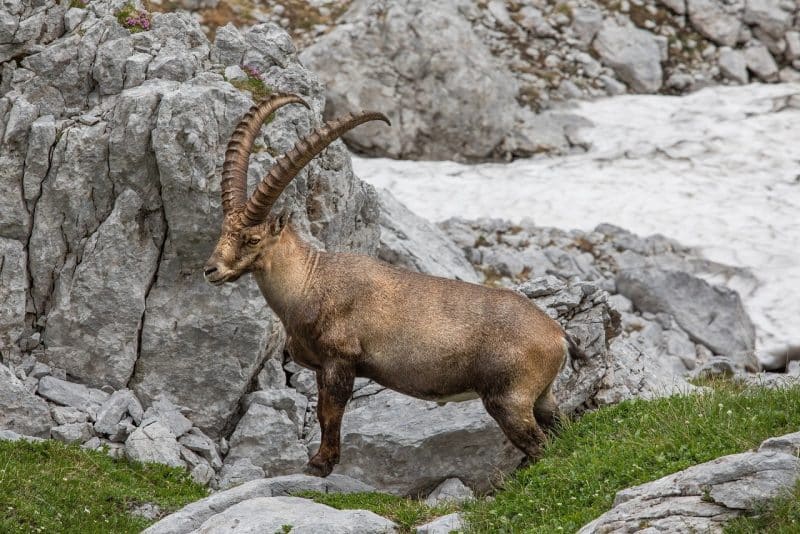
| Scientific Name | Capra |
| Where It Lives | Europe, Asia, Northern Africa, Middle East |
| What It Eats | Grasses and plants |
| Conservation Status | 2 species Vulnerable (VU), 2 Near Threatend (NT), and 2 Least Concern (LC) according to the IUCN Red List |
Fun Fact: Their hooves work like suction cups to allow them to climb sheer cliffs.
Ibex are wild goats with cloven hoods and long horns found in the mountains of Europe, Asia, the Middle East, and Northern Africa.
There are several species that belong to the genus Capra, of which they all are sure-footed on the mountain slopes they reside. With the help of their curved hoves, these animals are able to climb up incredibly steep slopes and make impressive jumps without a running start. These amazing animals have an average head length of 4’11 ft(150 cm) and a shoulder height of 2’11 ft (90 cm). Females are about 88 lb (40 kg), whereas bucks can weigh over 220 lb (100 kg).
2. Iberian Frog
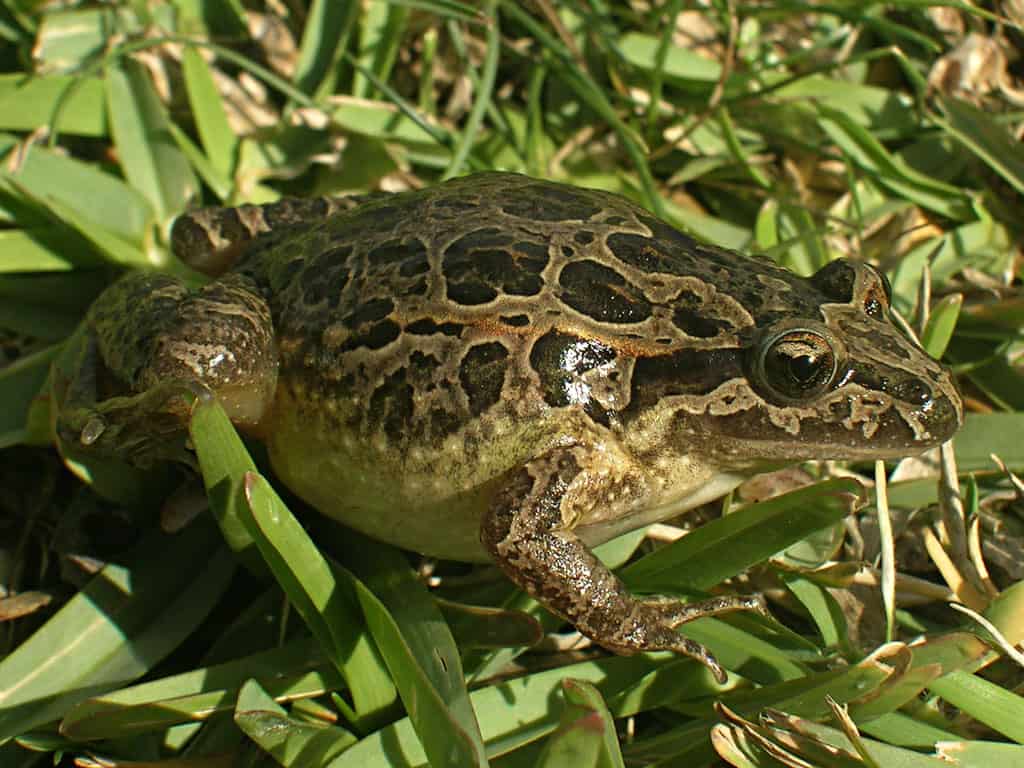
| Scientific Name | Discoglossus galganoi |
| Where It Lives | Portugal and Spain |
| What It Eats | Insects |
| Conservation Status | Least Concern (LC) according to the IUCN Red List |
Fun Fact: They have a distinctive call generally produced at night.
The Iberian Frog is endemic to Portugal and Spain. Where it prefers to live in open plains, grasslands, swamps, and marshes.
During the breeding season, the females can lay as many as 5,000 eggs per season, luckily over multiple sessions. These eggs are laid in water under plants and usually hatch between 2 to 6 days after. Tadpoles go through metamorphosis when they are between 22 and 60 days of age, and the young frogs are only about 0.4 inches in size when they leave the water to explore the surrounding habitat.
3. Ibis

| Scientific Name | Threskiornithidae |
| Where It Lives | Every continent except Antartica |
| What It Eats | Fish, mollusks, insects |
| Conservation Status | 6 species Endangered (EN), 3 Critically Endangered (CN), 3 Near Threatened (NT), 2 Vulnerable (VU) and the rest Least Concern (LC) according to the IUCN Red List |
Fun Fact: Both male and female Ibises collaborate in the parenting duties, taking turns incubating the eggs and sharing the responsibility of feeding the adorable baby chicks.
There are about 26 Ibis species belonging to the Threskiornithidae family. These wading birds live in lagoons, lakes, marshes, and bay areas in warmer regions of the world.
These birds use their long curved bills to grab prey while feeding in their groups. These long-legged birds form monogamous breeding pairs and are known to be territorial during feeding time and nesting seasons. Ibises that exist today are all capable of flight, although two extinct species were not. The Scared Ibis held a sacred and revered status among the ancient Egyptians, earning high respect in Southern Arabia and Egypt where they are found.
4. Ibizan Hound

| Scientific Name | Canis lupus familiaris |
| Where It Lives | Globally |
| What It Eats | High-quality dog food and animal protein |
| Conservation Status | Not Endangered |
Fun Fact: The first two Ibizan Hounds were introduced to the United States by none other than Colonel and Mrs. Consuelo Seoane.
Although these days Ibizan Hounds are found across the globe today, they originated in the Balearic Islands of Spain many years ago. Here they were bred for rabbit hunting and proved extremely successful with their heightened scenting abilities.
Ibizian hounds are one of the oldest canine breeds that still exist today – drawings of these dogs were found the the graves of ancient pharaohs! Both wiry and smooth hair types are found in the breed, although the smooth hair type occurs more often. While they make excellent additions to families, their instinct to chase smaller animals cautions against keeping them in close quarters with cats.
5. Icefish
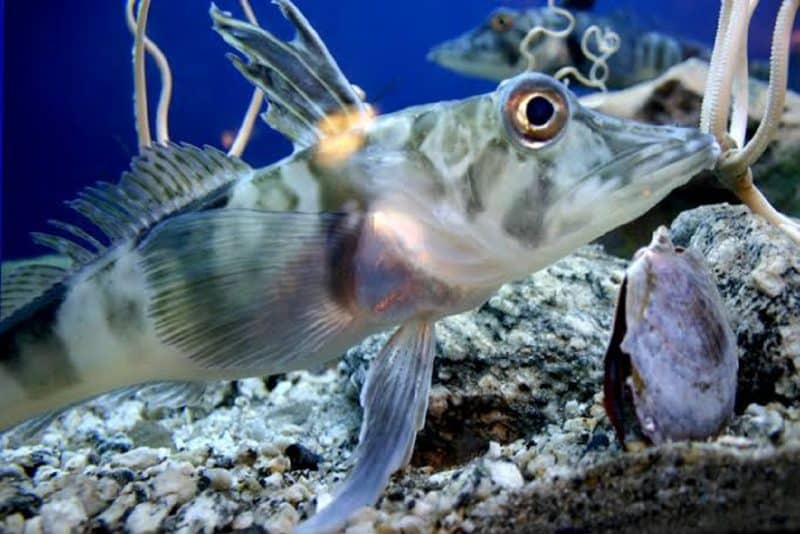
| Scientific Name | Channichthyidae |
| Where It Lives | Southern Ocean, Antarctica |
| What It Eats | Small fish, crustaceans |
| Conservation Status | 1 species Vulnerable (VU), 1 Endangered (EN), 6 Least Concern (LC) according to the IUCN Red List |
Fun Fact: It is called white-blooded because its blood lacks hemoglobin and appears white.
There are a few different icefish species belonging to the family Channichthyidae. These incredible fish are found in the freezing waters of the Southern Ocean and Antarctica.
These fish are also referred to as white-blooded fish, as their blood lacks hemoglobin and red blood cells, making their blood look white! Another name they also go by is crocodile icefish because their mouth shape resembles that of a crocodile’s. These fish have large hearts and gill blood vessels that allow for high-volume blood circulation to get enough oxygen from the water, although they do not have hemoglobin! They can also survive prolonged periods of starvation.
6. Icelandic Sheepdog
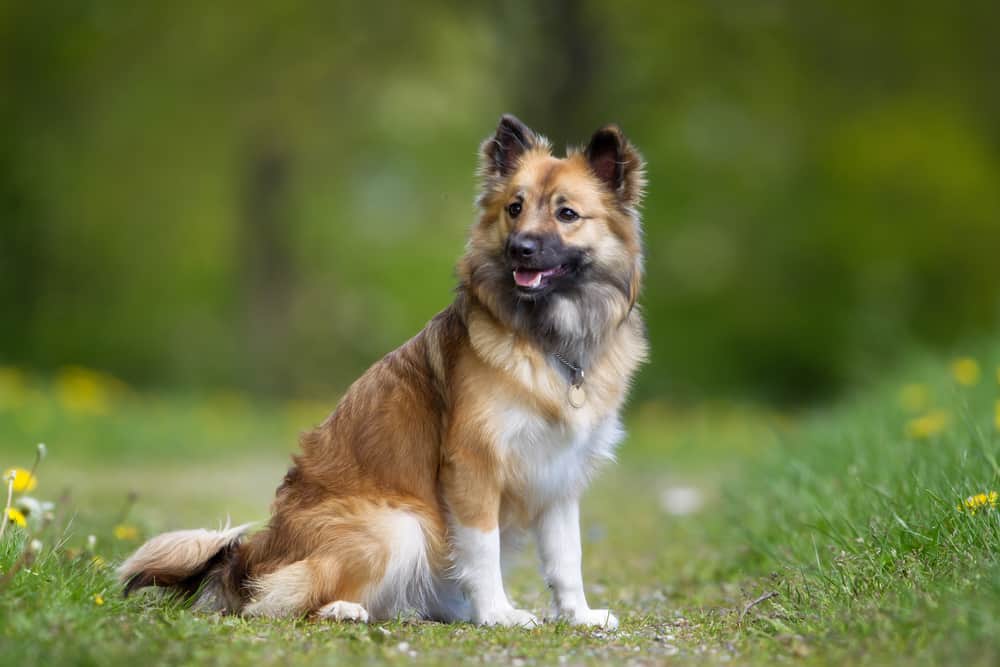
| Scientific Name | Canis lupus familiaris |
| Where It Lives | Globally, mostly Europe |
| What It Eats | High-quality dog food and animal protein |
| Conservation Status | Not Endangered |
Fun Fact: They always seem to have a happy expression.
The Icelandic sheepdog is native to Iceland, as their name suggests. This Nordic spitz-type breed where originally, and sometimes still, used as herders of medium-sized animals, especially horses and sheep.
These muscular dogs weigh up to 31 pounds and are incredibly agile over the rough terrains of rural Iceland. However, they are quite short reaching sizes of no larger than 18 inches! Their dense coats offer protection against cold temperatures and come in many different colors, although their markings are always white. These fox-faced and bushy-tailed dogs make for loving and friendly companions, although they have high energy levels and should be kept active for their health.
7. Iguana
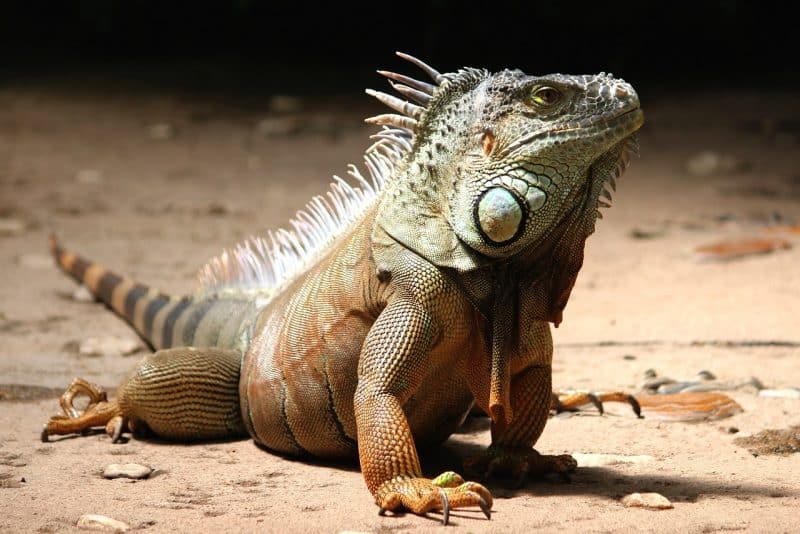
| Scientific Name | Iguana |
| Where It Lives | Native to Mexico, South America, Central America, Caribbean |
| What It Eats | Insects, fruits, leaves |
| Conservation Status | 11 species Endangered (EN), 7 Critically Endangered (CR), 7 Vulnerable (VU), 30 Least Concern (LC) according to the IUCN Red List |
Fun Fact: They use visual signals to communicate.
There are around 47 species of Iguanas today. These herbivorous reptiles are often kept as pets but are natively found in tropical areas across the Caribbean, Mexico, Central America, and South America.
They can be seen in a wide variety of different colors, ranging from yellow to green to brown. Like other reptiles, cold-blooded Iguanas bake in the sun to help regulate their body temperatures. Some species are terrestrial animals that prefer living on the ground, while most live in trees. These large lizards grow to sizes of anything between 4 and 7 feet in length, with their tail included.
8. Immortal Jellyfish
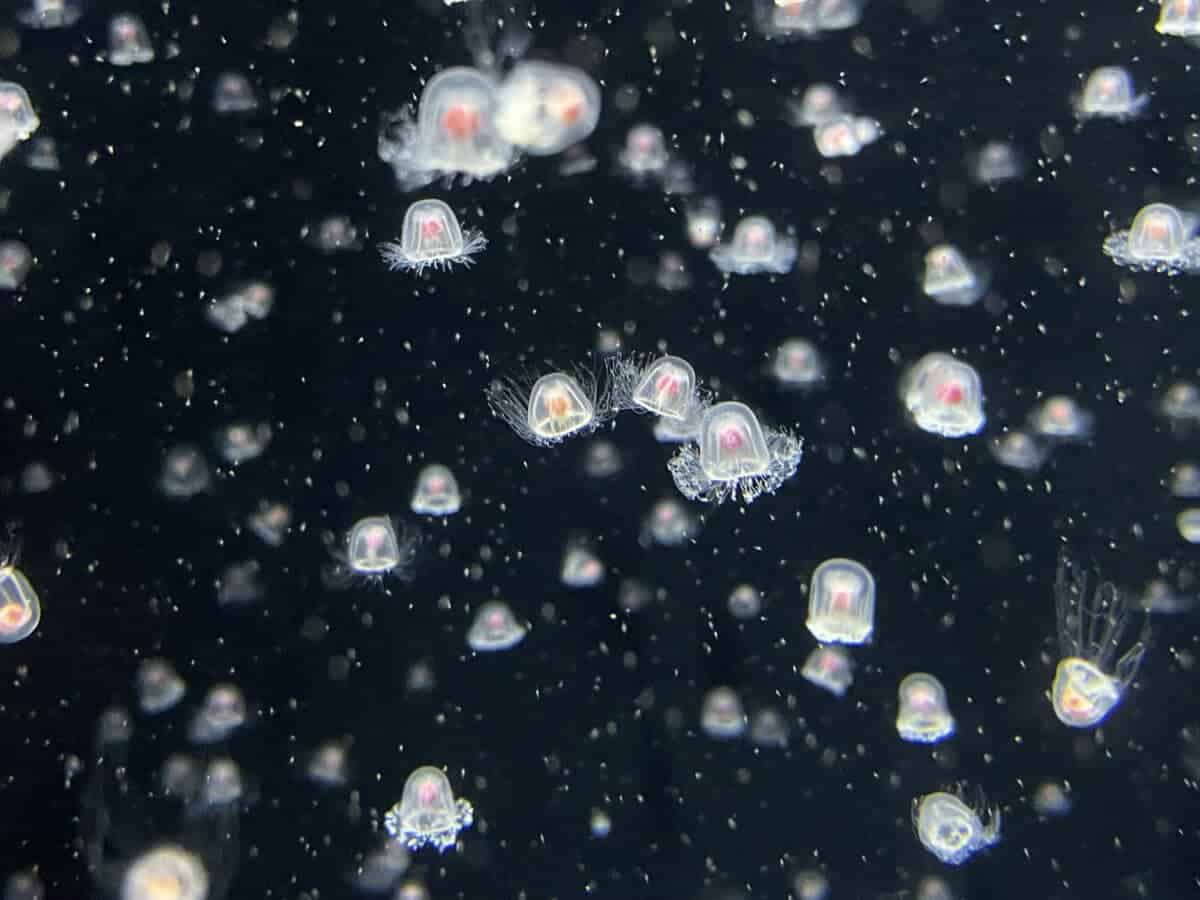
| Scientific Name | Turritopsis dohrnii |
| Where It Lives | Oceans around the globe |
| What It Eats | Plankton, fish eggs, larvae |
| Conservation Status | Not Endangered |
Fun Fact: It can hitchhike on cargo ships.
The tiny Immortal Jellyfish lives in tropical and temperate waters around the world.
They received their name because of their incredible ability to regenerate themselves and live forever. Their other nickname, the Benjamin Button Jellyfish, plays well on their ability to reverse their lifecycle – which is what allows them to live forever! They do this when they are injured or starved. In these states, they reabsorb their tentacles, lose the ability to swim, and return to the ocean floor in a blob. From here on they repeat their growth cycle until they are a functioning full-grown jelly again!
9. Impala
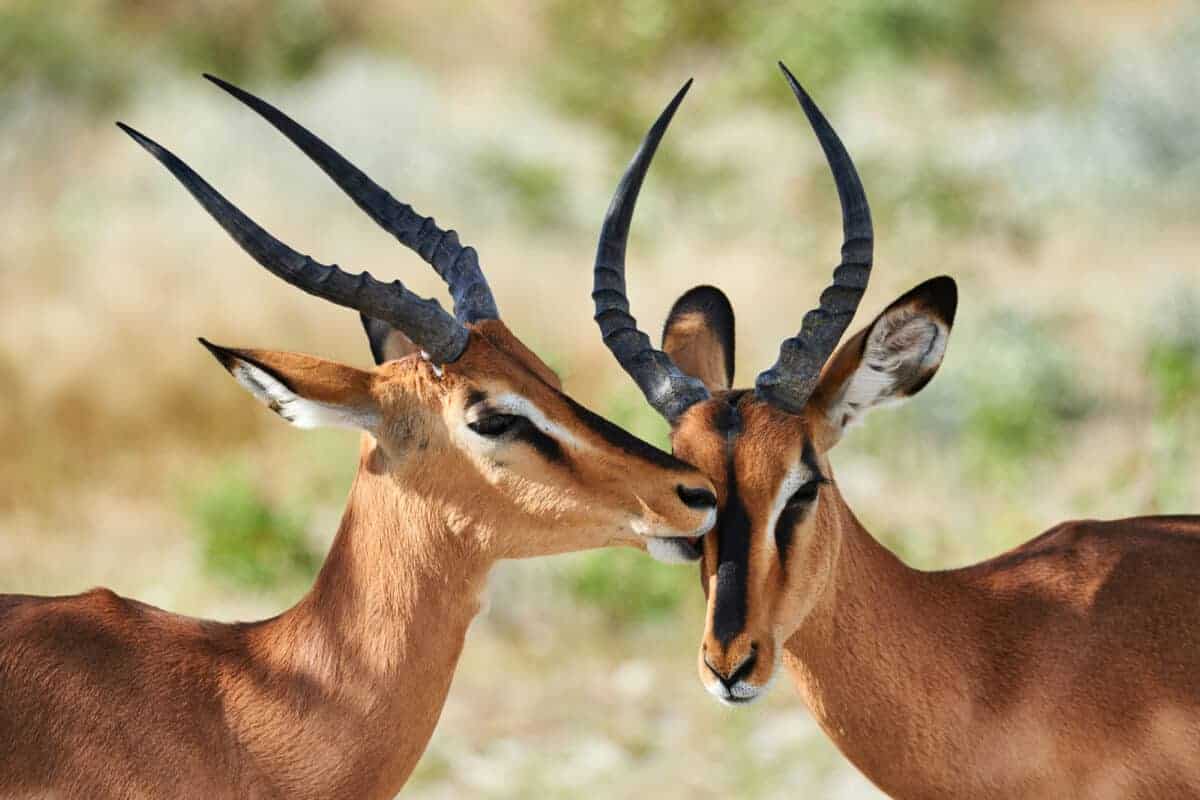
| Scientific Name | Aepyceros melampus |
| Where It Lives | Sub-Saharan Africa |
| What It Eats | Grass, leaves, shrubs, seeds, fruit |
| Conservation Status | Least Concern (LC) according to the IUCN Red List |
Fun Fact: Male Impala horns can grow to the same length as their body height, while female Impala has no horns.
Imapalas like to live in grassland and woodland areas close to water in Sub-Saharan Africa.
These beautiful red-brown antelopes are known for their defensive jumps when feeling threatened. Or while running, they can leap 33 feet forward and 10 feet high in just one jump! Female Impalas and their offspring live in groups and they become highly territorial during the wet season. Breeding male Impalas fiercely defend their home territories during mating season, and can often be seen fighting with other males. Although they live in groups, pregnant female Impalas live separately from the herd and return with their offspring after they are born, caring for them in the herd.
10. Imperial Moth
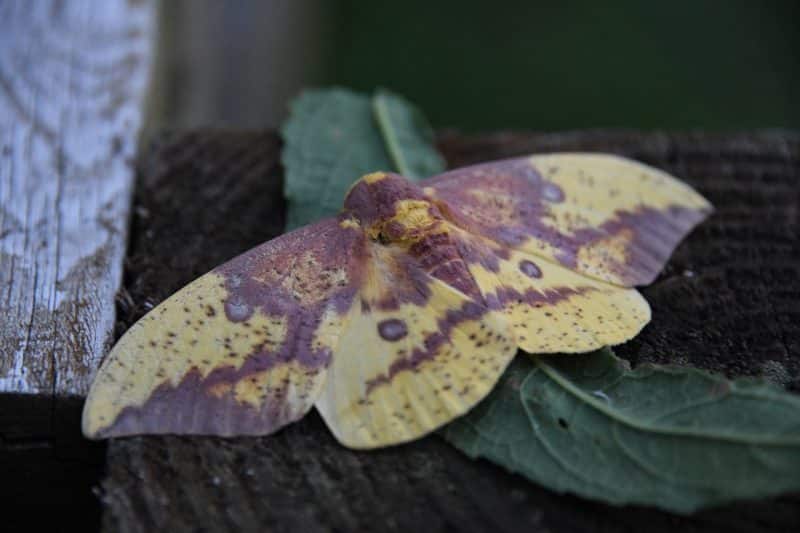
| Scientific Name | Eacles imperialis |
| Where It Lives | Americas |
| What It Eats | Caterpillar eats |
| Conservation Status | Least Concern (LC) according to the IUCN Red List |
Fun Fact: Imperial moths do not eat because their mouthparts are underdeveloped.
The fascinating Imperial moth lives in forests in a wide range of areas. Mostly found in Central and Southern parts of the U.S. but also ranges from Canada to Argentina!
Their exoskeleton comes in many different colors and kind of replicates the appearance of a dead lead, acting as protection from predators. Imperial moths have a lifespan of one week, as these moths do not eat and die not long after laying their eggs. But this is not the only interesting thing about these animals, instead of spinning silk cocoons like other silkworm species, they dig into soil to pupate.
11. Indian Cobra
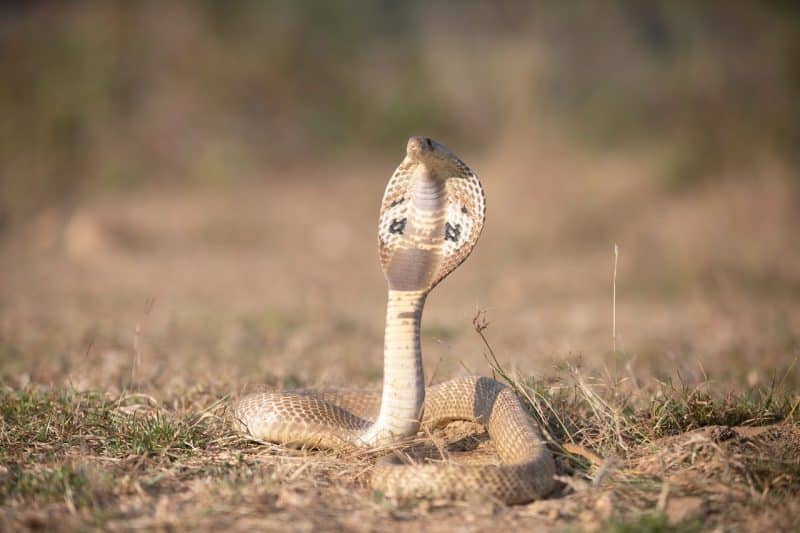
| Scientific Name | Naja naja |
| Where It Lives | South Asia |
| What It Eats | Frogs, rodents, lizards |
| Conservation Status | Not Endangered (NE) according to the IUCN Red List |
Fun Fact: They are the snake of choice among snake charmers.
The scary Indian Cobra is a native of the Indian continent, where it lives in a wide array of habitats. Including forests, wetlands, cities, plains, rocky terrains, and agricultural areas.
This is one of the most dangerous snakes in the world and is considered one of the species behind most snake bite deaths in India. These massive snakes can grow up to seven feet long and live as long as 24 years! These solitary predators nest in embankment holes, mammals’ nests, tree hollows, and even rock piles. When threatened they lift their heads and spread their hoods in warning. Their venom contains a potent neurotoxin and cardiotoxin that can cause symptoms anywhere between 15 minutes and 2 hours of a bite.
12. Indian Palm Squirrel
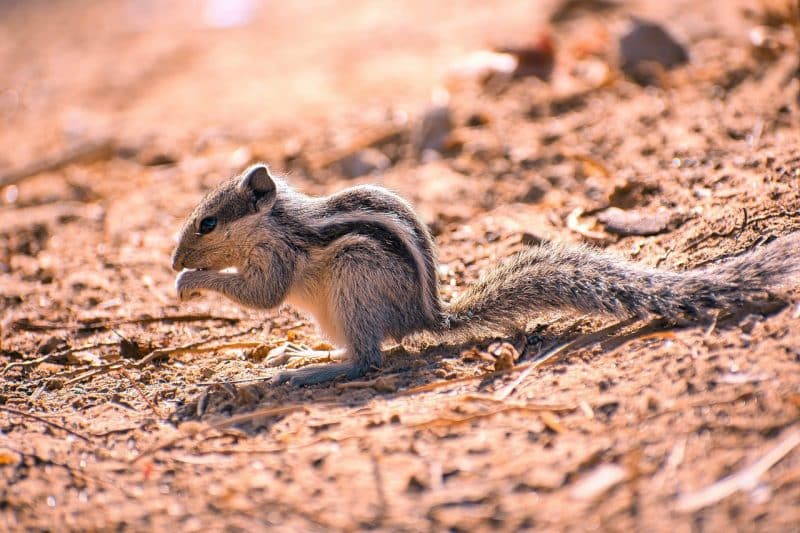
| Scientific Name | Funambulus palmarum |
| Where It Lives | India, Sri Lanka |
| What It Eats | Nuts, fruits, insects, seeds, eggs |
| Conservation Status | Least Concern (LC) according to the IUCN Red List |
Fun Fact: The Indian Palm Squirrel differs from other squirrels because they don’t hibernate.
Indian Palm Squirrels are native to India and Sri Lanka, where they inhabit forests, mangroves, parks, grasslands, scrubs, and urban areas.
These solitary squirrels are active during the day dividing their time between the ground and trees. They only meet up with others of their species during mating season during which they are extremely active! They are often seen chasing each other and producing very loud mating calls. Their offspring come into the world, blind, naked, and completely dependent on their parents for survival for the first 9 weeks of their lives. These rodents are sacred in India and are even fed by some Hindu families.
13. Indian Rhinoceros
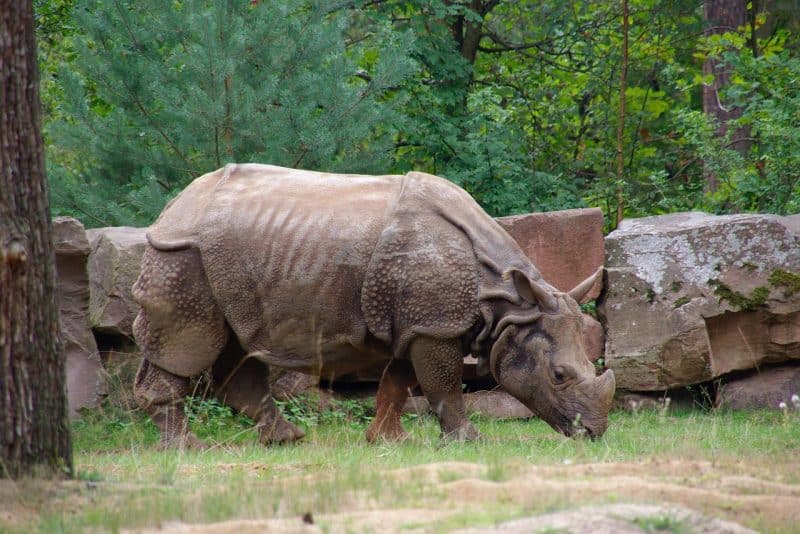
| Scientific Name | Rhinoceros unicornis |
| Where It Lives | India, Nepal |
| What It Eats | Grass, leaves, branches, fruits, plants, crops |
| Conservation Status | Vulnerable (VU) according to the IUCN Red List |
Fun Fact: They have increased in number and are no longer endangered but referred to as ‘vulnerable.’
The magnificent Indian Rhinoceros lives in grasslands and sometimes closeby to swamps and forests in India and Nepal.
These ‘amour-plated’ rhinos are identified by their single black horn and large size – together with the African white rhino, they are the largest of all the species! These animals are mostly solitary, and spend their days chilling in mud to cool off, and eat during the early mornings and late afternoons. They are after all the rhino species that loves swimming the most. Once almost extinct, their numbers grew from 600 to almost 3,000 over the last couple of years, showing that by working together conservation is possible!
14. Indian Star Tortoise
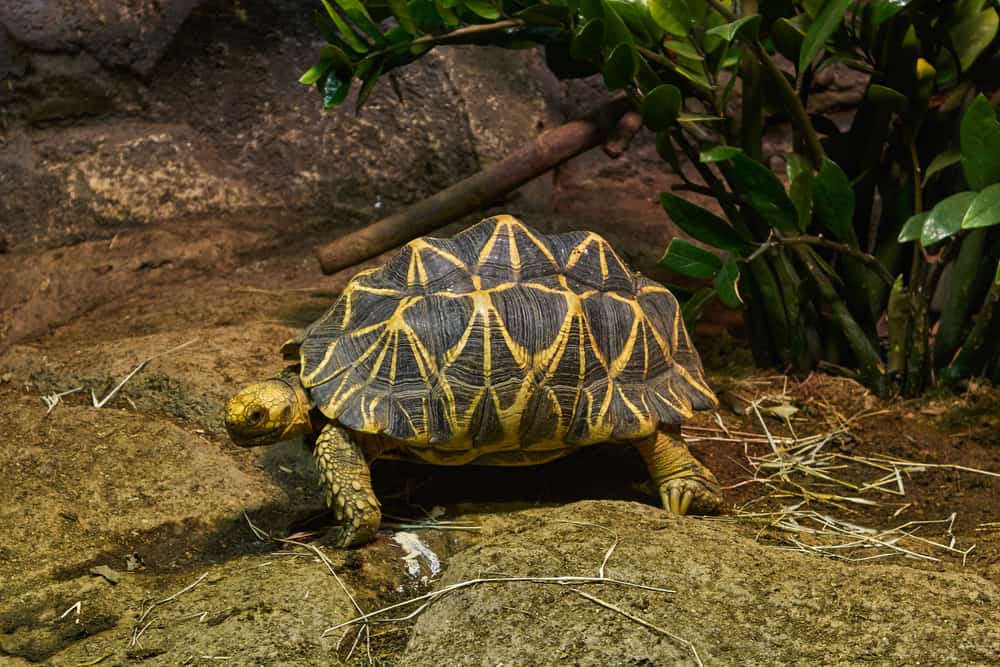
| Scientific Name | Geochelone elegans |
| Where It Lives | India, Pakistan, Sri Lanka |
| What It Eats | Flowers, leaves, grasses, fruits and insects |
| Conservation Status | Vulnerable (VU) according to the IUCN Red List |
Fun Fact: Hatchlings are born without the marks.
The Indian Star Tortoise is found in Sri Lanka, India, and India, where they live in semi-arid forests, scrub forests, grasslands, and semi-desert areas.
These tortoises are known for their stunning star-patterned shells. Not only are these shells beautiful, but act as their protection – they pull their limbs and head into when danger is near. These solitary tortoises are more active during rainy seasons when they spend their days moving around and eating. During hot seasons and when food is scarce, they are inactive and stay for long periods without eating. They are listed as vulnerable due to habitat loss, hunting, and the exotic pet trade.
15. Indochinese Tiger
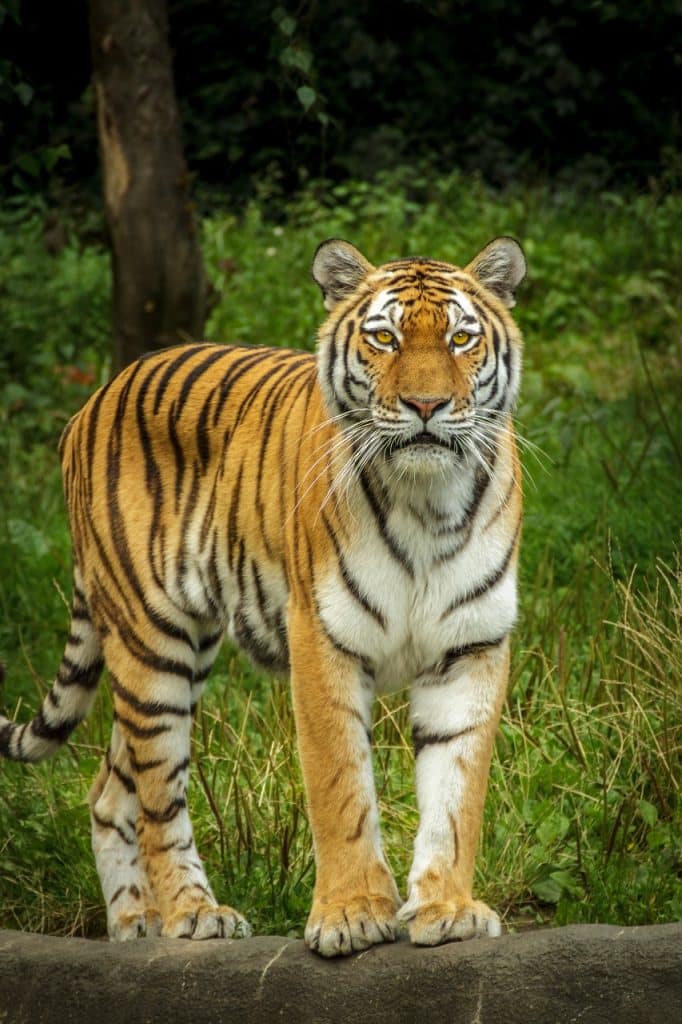
| Scientific Name | Panthera tigris corbetti |
| Where It Lives | Southeast Asia |
| What It Eats | Other animals |
| Conservation Status | Endangered (EN) according to the IUCN Red List |
Fun Fact: This tiger is said to be already extinct in China.
The Indochinese Tiger today lives in Thailand and Myanmar with only about 300 to 400 of these animals left. They are believed to be already extinct in China.
These tigers are smaller than Bengal Tigers, with golden-orange coats and narrower stripes, their heads are also more narrow than those of other tiger species. Each tiger has a different stripe pattern, making them as unique as human fingerprints! These solitary animals prefer the secluded mountain forests in Southeast Asia, where they can hunt at night and move around as they please. These magnificent animals’ numbers have plummeted due to illegal hunting and wildlife trade for many years.
16. Indri
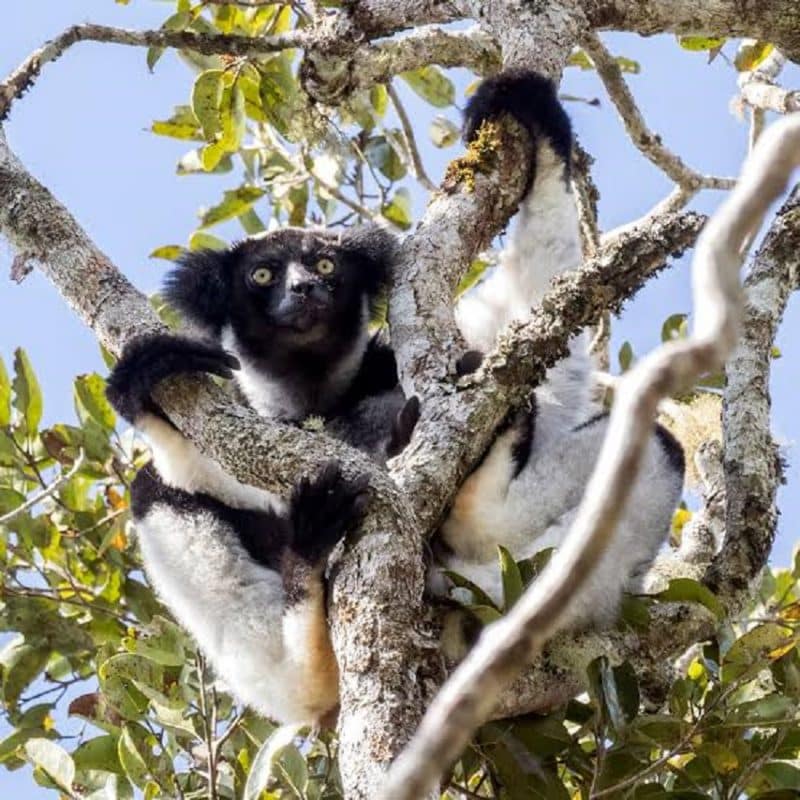
| Scientific Name | Indri indri |
| Where It Lives | Madagascar |
| What It Eats | Fruits, flowers, leaves |
| Conservation Status | Critically Endangered (CR) according to the IUCN Red List |
Fun Fact: They can leap up to 10 meters between vertical branches.
The Indri is the largest species of Lemur and is found only in Madagascar. Here they live in montane and coastal rainforests.
These lemurs, also called babakoto, grow to about 29 inches and 21 pounds. They have specialized toes and fingers to help them climb and make successful leaps from one tree to another. When these animals move on the ground it is a quite comical sight as they keep their arms above their heads! These social animals form monogamous breeding pairs, that produce one young per season. The mother carries her clinging baby around her stomach, and then her back for the first 6 months of their lives.
17. Irish Setter
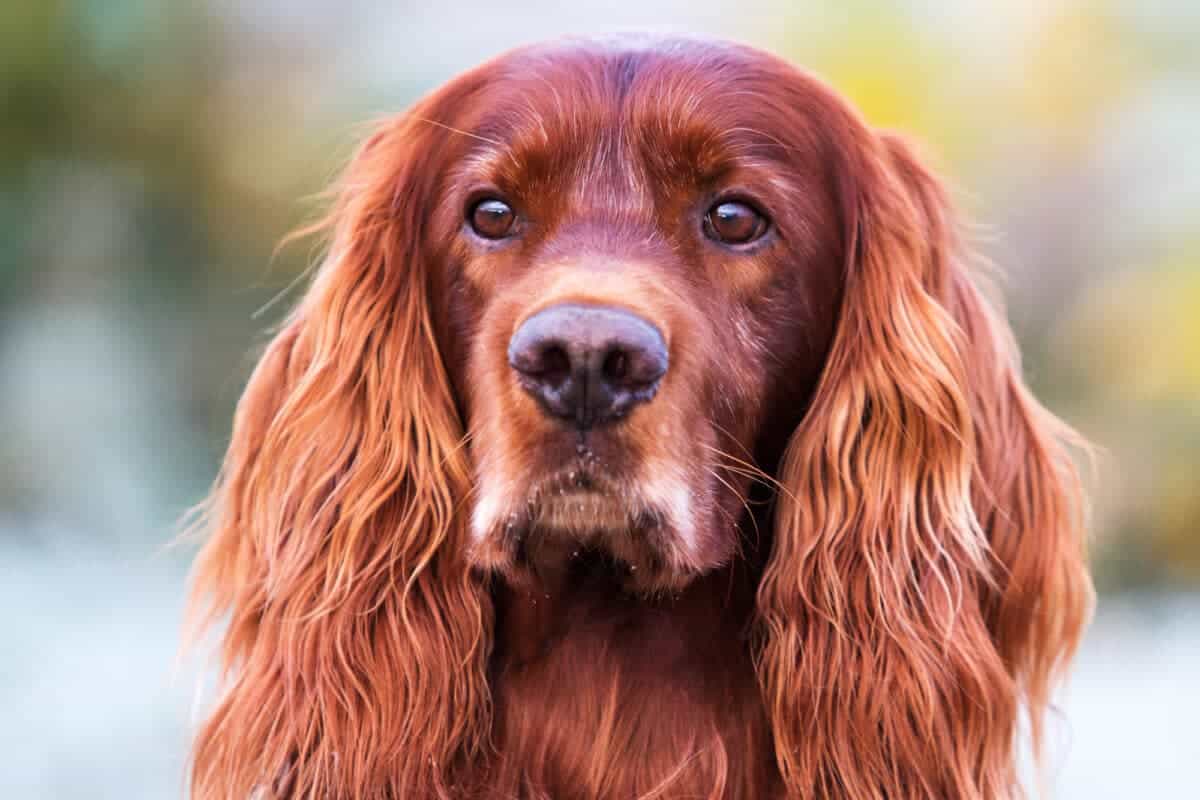
| Scientific Name | Canis lupus familiaris |
| Where It Lives | Europe |
| What It Eats | High-quality dog food and animal protein |
| Conservation Status | Not Endangered |
Fun Fact: They can live up to 16 years.
The Irish Setters originated in Ireland, where they were bred as sporting and hunting dogs, helping hunters find birds.
These beautiful dogs are known for their silky red coats and sweet personalities. They make for wonderful pets but have to be exercised often due to their bursting energy levels. Growing to around two feet tall along with their elegant yet muscular build, Irish Setters are still seen as one of the top sporting dog breeds. As bold and brave as they are out hunting, they are just as sensitive and loving at home. These dogs respond the best to patient and positive training.
18. Irish Wolfhound
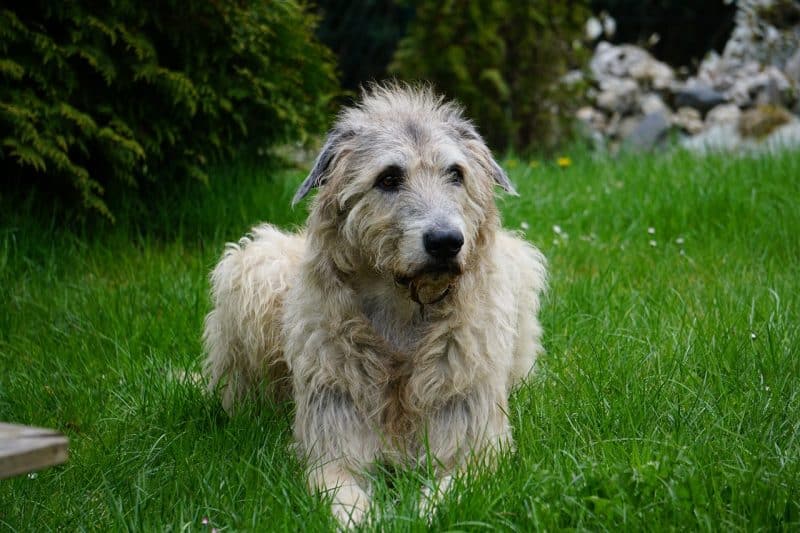
| Scientific Name | Canis lupus familiaris |
| Where It Lives | Globally |
| What It Eats | High-quality dog food and animal protein |
| Conservation Status | Not Endangered |
Fun Fact: Irish farmers used this breed to control the wolf population. That is how they got their name.
The Irish Wolfhound originated in Ireland. Here these big game hunters helped farmers control wolves preying on their animals.
These long-legged dogs have wiry hair, with friendly faces. Don’t let their fierce hunting behavior fool you, these dogs do not make for great watchdogs – even though their hunting success is attributed to their phenomenal sight. Although they are alert and courageous, they are not suspicious or aggressive dogs. These dogs can be described as introverted pets, forming strong bonds with their owners, yet never being destructive or loud. Yet, they can be very protective of their owners and other pets they grow up with when they are provoked.
19. Italian Greyhound

| Scientific Name | Canis lupus familiaris |
| Where It Lives | Globally |
| What It Eats | High-quality dog food and animal protein |
| Conservation Status | Not Endangered |
Fun Facts: They can live up to 15 years.
Italian Greyhounds originated in Italy, as their name suggests. They were used to hunt rabbits and hares, but most importantly as companions, just as they are seen today.
These dogs give an air of elegance and regality – no wonder they were popular among the wealthy during the Italian Renaissance! Even being permanently captured in artwork from this era. These tiny sight dogs grow no taller than 15 inches and weigh no more than 11 pounds. These playful dogs love attention and will demand it. These fast dogs reach speeds of 37 mph when instinct kicks in and they chase after something that catches their eye. Due to their small size and low body fat, they tend to get cold fast – making them great cuddle buddies!
20. Ivory-Billed Woodpecker
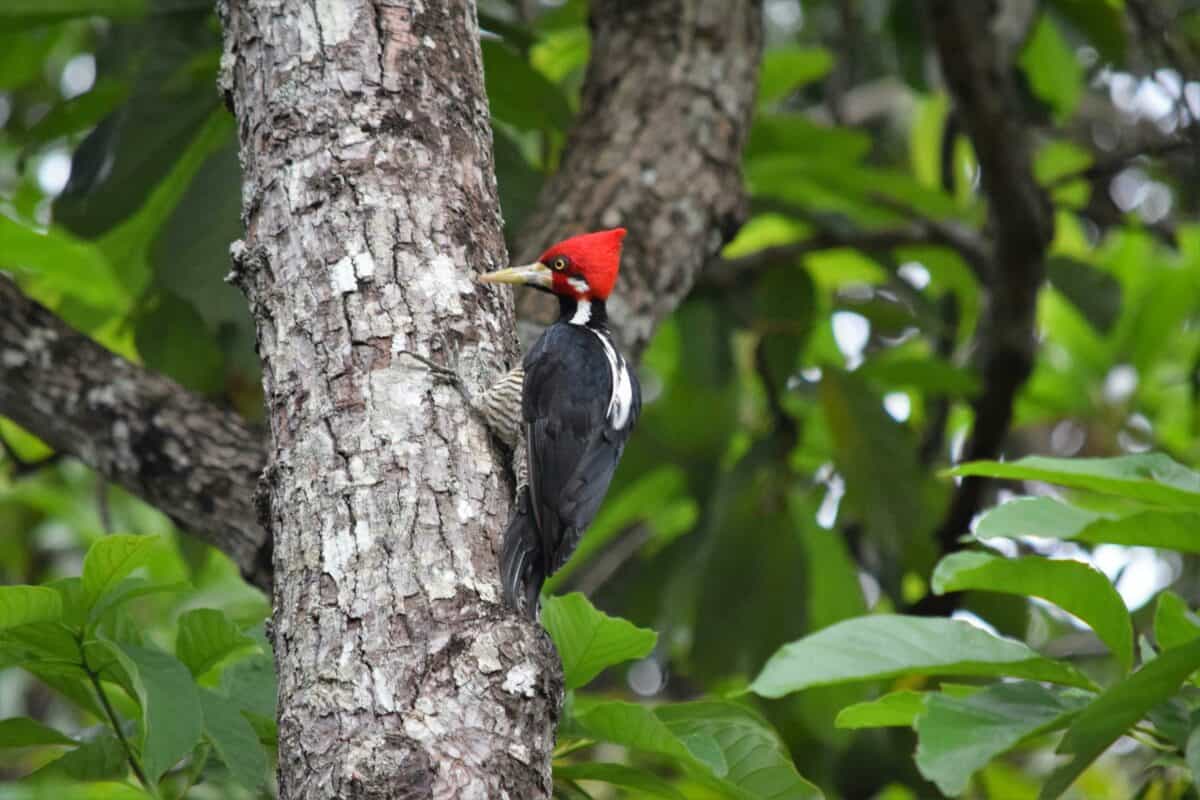
| Scientific Name | Campephilus principalis |
| Where It Lives | Carribean Islands |
| What It Eats | Beetle larvae, fruits, nuts, seeds |
| Conservation Status | Critically Endangered (CR) according to the IUCN Red List |
Fun Fact: It can drill into wood with its beak
The Ivory-Billed Woodpecker lives in swamps and pine forest areas in the Caribbean Islands. Normally where there are large amounts of decaying trees.
These birds are listed as critically endangered, some believe they might even be extinct as they haven’t been spotted in the wild in years. They spend their evenings in the roost holes they made in trees and start looking for food at dawn. Ivory-billed woodpeckers mate for life. Females produce between 3 to 6 eggs at a time, whereafter both parents care for the chicks. The mating pairs are regularly seen traveling together also.
Summary of Animals That Start with I
The letter ‘I’ brings an intriguing array of animals ranging from the skilled cliff-climbing Ibex to the potentially immortal Jellyfish. Some of these rare animals cannot be seen in daily life. Some others are common, and you can see them around you. However, all of them are amazing and deserve a place on this list.
Thanks for coming with us on this ride.
Here is another article, animals that start with v, in this series, you’ll enjoy. Here you can find them all:
- Animals That Start With A
- Animals That Start With B
- Animals That Start With C
- Animals That Start With D
- Animals That Start With E
- Animals That Start With F
- Animals That Start With G
- Animals That Start With H
- Animals That Start With J
- Animals That Start With K
- Animals That Start With L
- Animals That Start With M
- Animals That Start With N
- Animals That Start With O
- Animals That Start With P
- Animals That Start With Q
- Animals That Start With R
- Animals That Start With S
- Animals That Start With T
- Animals That Start With U
- Animals That Start With V
- Animals That Start With W
- Animals That Start With X
- Animals That Start With Y
- Animals That Start With Z
Thank you for reading!
- Animals and Wildlife in Colorado - April 24, 2024
- Best Places to see Sloths - April 24, 2024
- Where to See Alligators in the Wild - April 24, 2024

